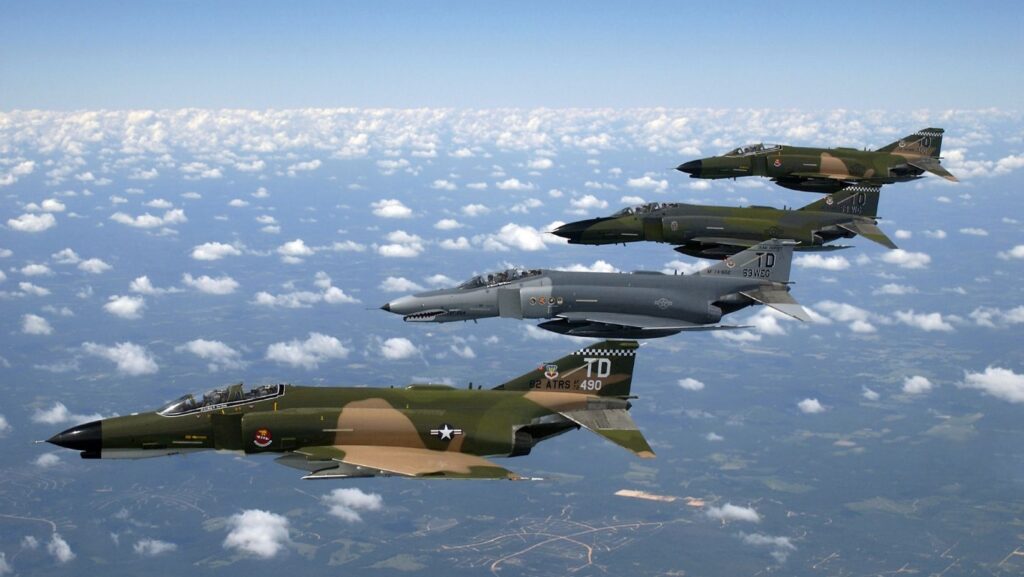7 Battle-Tested Tactics: Unleashing the Power of Military Strategies for Small Business Success

Have you ever considered that the worlds of warfare and business have more in common than you might think? The principles and strategies that guide military success can also be applied to the business world.
Suppose you’re running a small home-based enterprise or steering a larger organization. In that case, this article will demonstrate how military strategies can help you navigate competitive landscapes, seize opportunities, and achieve your goals.
We’ll discuss leveraging military-inspired techniques to drive growth and innovation while emphasizing the need to build a resilient and agile organization. Because in today’s business environment, adaptability is key to success.
So, gear up and prepare for a journey that will open your eyes to new ways of thinking, overcoming business challenges, and executing proven strategies in your business. Let’s explore how the wisdom of military strategists can be your secret weapon in the battle for success!
Leadership Fundamentals

1. Taking Ownership
In the military and in business, it is absolutely crucial that leaders at every level take on and accept extreme responsibility. This means viewing the team’s failures as their own failures, accepting blame for mistakes made, and finding solutions to problems without blaming others.
Only once leaders accept their role and take on ownership can they thrive and lead because it is impossible to change things if the blame is on someone else.
You can see it in many companies and platoons that are struggling; instead of leaders accepting losses, figuring out solutions for the problems, and growing from failures, they waste hours or days figuring out who exactly is to blame. Noting gets fixed, the scapegoat gets shamed, and the atmosphere stays toxic.
This doesn’t mean not holding people accountable; quite the contrary, in fact. But instead of saying: “You did this wrong! How could you not do this particular task?
“We lost thousands because of you!” you say: “I made a terrible mistake, and we lost thousands because of that. I’m in charge of this team, and I clearly failed to point out how this particular task can affect our profit.
Moving forward, we will implement this, this, and this checkpoint to make sure it doesn’t happen again.”
2. Prioritise And Execute
The importance of identifying and solving the most critical tasks first can’t be overstated. Being a leader in the military or in a company can be one of the most stressful things imaginable. In both cases, people’s lives depend on you, either directly or through the profit that pays their wages. Identifying the most pressuring tasks and giving them unshared, full attention is absolutely essential in stressful situations.
On the battlefield and under enemy attack, there is no time to multitask and waste critical seconds with things that don’t matter immediately.
The trained leader recognizes the most urgent problem, makes commands to solve it, and goes down the list of problems one by one. In business, the same principle applies. Things such as scaling marketing and plans for innovation can wait if you have major issues in production. Knowing where to focus is an essential characteristic of a good leader.
3. Discipline
Discipline is crucial for leaders. It forms the backbone of effective leadership, enabling leaders to set the right example and inspire their teams. A disciplined leader displays consistency, reliability, and dedication, traits that are admired and emulated by team members.
Discipline is the foundation for good habits. These good habits create a structured environment that fosters focus and productivity. A leader who practices discipline in his/her daily routine sets the stage for success. By adhering to a set routine, a leader can maximize their time, energy, and resources, driving better results for themselves and their team.
Physical fitness plays a significant role in maintaining discipline in the military. A leader who prioritizes their health and well-being demonstrates a commitment to personal growth and self-improvement.
A military leader who is out of shape doesn’t get respected by the troops. Staying fit requires self-discipline and determination, qualities that resonate in other areas of life. Engaging in regular exercise has many benefits. It helps leaders build mental fortitude, which is essential for making tough decisions and handling high-pressure situations.
If you are a leader that wants to be admired, showing that you take care of your own body is a really good way to do so. If you don’t have the time to go to the studio, get a gym station or just do some bodyweight exercises. If you are a true leader, I’m sure you’ll find a way to get a workout in!
Applying Military Strategies In Business: Tactical And Strategic Approaches

Tactical And Strategic Approaches In A Military Context
In the military, tactics, and strategies are two essential components of planning and execution. Tactics involve the specific actions and maneuvers used in battles, while strategies are the overarching plans that guide long-term goals and objectives. Let’s see how these concepts apply to business.
Here are some examples from the military:
Tactical Decisions
- Choosing the optimal route for troop movement: A tactical decision might involve selecting the best path to move soldiers from one location to another, considering factors such as terrain, enemy positions, and speed requirements.
- Ambushing the enemy: A tactical decision could involve planning and executing an ambush on enemy forces, which requires careful consideration of factors like timing, positioning, and the element of surprise.
- Selecting the right weaponry for a specific engagement: A tactical decision may involve choosing the most effective weapons and equipment for a particular battle or mission, taking into account factors such as enemy defenses, range, and available resources.
Strategic Decisions
- Defining overall war objectives: A strategic decision might involve setting the overarching goals for a military campaign, such as capturing key enemy territory, neutralizing enemy forces, or securing vital resources.
- Developing a long-term plan for achieving victory: A strategic decision may involve creating a comprehensive plan that outlines the steps and resources necessary to achieve the overall war objectives, including the coordination of multiple battles, troop deployments, and resource allocation.
- Forming alliances with other nations: A strategic decision could involve alliances with other countries, which can provide additional military resources, strategic advantages, or political support during a conflict.
Tactical And Strategic Decisions For Small And Large Businesses
For small home businesses, tactical decisions could include offering discounts, improving customer service, or engaging with customers on social media. Strategic decisions might involve expanding product lines, exploring partnerships, or targeting new customer segments.
Larger companies may make tactical decisions like entering a bidding war for a competitor’s assets, adjusting production levels, or initiating cost-cutting measures. Strategic decisions could include mergers and acquisitions, investing in research and development, or redefining the company’s mission and vision.
To be successful in business, it’s crucial to strike a good balance between tactical and strategic thinking.
By understanding the difference between tactical and strategic approaches, you can make more informed decisions for your business, ensuring both short-term success and long-term growth.
Keep in mind that a well-rounded strategy includes both elements, allowing you to stay adaptable and thrive in the competitive business landscape.
Leveraging Military Techniques For Business Growth And Innovation

The Concept Of “Force Multipliers” And Their Application In Business
“Force multipliers” are factors that amplify the effectiveness of a group or resource, giving them a significant advantage. In business, force multipliers can be anything that boosts your company’s efficiency, reach, or impact. By identifying and leveraging these factors, you can maximize your business’s success.
The Importance Of Innovation In Military And Business Contexts
Innovation is critical in both military and business environments. In the military, new technologies and tactics can provide a decisive edge. In business, innovation helps you stay ahead of the competition, meet changing customer needs, and adapt to evolving market trends.
Examples Of Military-Inspired Techniques For Driving Growth And Innovation
- Embrace delegation and decentralized decision-making: In the military, commanders empower their subordinates to make decisions, fostering agility and adaptability. In business, delegating responsibilities and empowering employees can lead to faster, more effective decision-making.
- Conduct after-action reviews: Military units often review their performance after missions to identify areas for improvement. Businesses can adopt this practice by regularly analyzing projects or initiatives, learning from successes and failures, and adjusting strategies accordingly.
- Employ scenario planning: Military leaders use scenario planning to prepare for various outcomes and develop flexible strategies. In business, considering different market conditions, customer behaviors, or competitor actions can help you create adaptable plans and make more informed decisions.
- Encourage collaboration and cross-functional teamwork: In the military, units from different specialties often work together to accomplish objectives. Encouraging collaboration between departments in your business can lead to new ideas, increased efficiency, and better problem-solving.
By adopting these military-inspired techniques, you can drive growth and innovation in your business, giving you a competitive edge and setting you on the path to success.
Building A Resilient And Agile Organization
Parallels Between Military Resilience And Business Resilience
Resilience is vital in both military and business settings. In the military, resilience refers to the ability to bounce back from setbacks, adjust to changing circumstances, and continue the mission.
In business, resilience means maintaining stability and growth despite challenges, such as economic downturns, market disruptions, or internal obstacles.
The Importance Of Adaptability And Agility An Today’s Fast-Paced Business Environment
In an ever-changing business landscape, adaptability and agility are key to staying resilient. Companies that can quickly pivot their strategies, respond to customer needs, and capitalize on new opportunities will thrive better in the long run.
Tips For Nurturing A Resilient And Agile Organizational Culture:
- Cultivate open communication: Foster a culture where employees feel comfortable sharing their ideas, troubles, and suggestions. This promotes adaptability and helps identify potential issues early on.
- Embrace change: Encourage your team to view change as an opportunity for development instead of a threat. By adopting a positive mindset towards change, your organization will be better equipped to handle new challenges and opportunities.
- Invest in employee development: Equip your team with the skills and knowledge they need to adapt to new situations. Offer training, mentorship, and learning opportunities that encourage growth and flexibility.
- Foster collaboration: Encourage teamwork and cooperation across departments, allowing for the sharing of ideas, skills, and resources. This will help your organization adapt more effectively to new challenges and opportunities.
- Plan for contingencies: Develop contingency plans for potential setbacks, ensuring your business can respond effectively to unforeseen challenges. This proactive approach will help your organization maintain stability and growth during turbulent times.
By cultivating a resilient and agile organizational culture, you’ll strengthen your business’s ability to navigate challenges, adapt to change, become more resilient, and thrive in a competitive market.
Summary
The worlds of warfare and business share several key principles that can help organizations navigate competitive landscapes and achieve their goals. By learning from military-inspired techniques, businesses can drive growth, innovation, and adaptability.
These techniques include taking ownership by fixing problems, prioritizing important tasks and not getting distracted, displaying mental and physical discipline by being reliable and finding the motivation to work out, and adopting tactical and strategic approaches to decision-making.
Resilience is vital in both military and business settings. By fostering open communication and embracing change, businesses can nurture a resilient and agile organizational culture that allows them to thrive in today’s environment.
By employing techniques such as delegation, after-action reviews, scenario planning, and cross-functional teamwork, businesses can become a force to be reckoned with.
Author Bio:

Simon Niklaus is a Swiss soldier, a fitness enthusiast, and a passionate martial artist. You can read his blog on simonniklaus.com.






